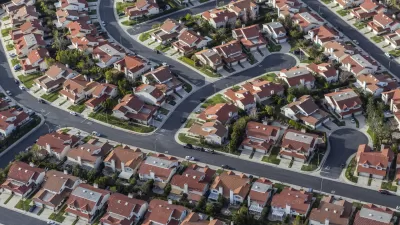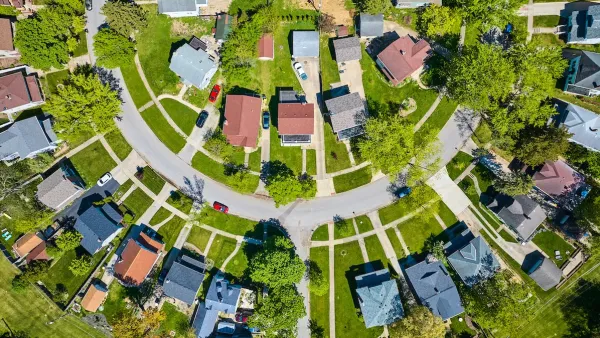With their anti-urban inward orientation, cul-de-sacs are representative of the auto-oriented, privatized suburban development model. But one sociologist is out to demonstrate their benefits by showing how cul-de-sacs can develop social cohesion.
Books like Bowling Alone have traced the decline in community engagement in postwar America, and connected such trends to the growth of suburban lifestyles. But, as Emily Badger explains, findings published by sociologist Thomas R. Hochschild Jr. in the Journal of Urban Planning and Development may upend our ideas about how suburban environments contribute to social cohesion.
"In sociologist's terms, Hochschild ultimately concluded that people who live in traditional bulb cul-de-sacs have the highest levels of attitudinal and behavioral cohesion (covering both how they feel about their neighbors and how much they actually interact with them)," she notes. "People who live on your average residential through-street have the lowest levels (in between the two are 'dead-end' cul-de-sacs that lack that traditional, circular social space)."
"To Hochschild's thinking, all of this means that we may want to weigh the social benefits of the cul-de-sac against the engineering critiques of how they fit into the larger street grid," adds Badger. "Or, better yet, he envisions designing cul-de-sacs that more directly connect to main, walkable routes to school or the grocery store, in an effort to address both schools of thought."
FULL STORY: The Case for Cul-de-Sacs

Planetizen Federal Action Tracker
A weekly monitor of how Trump’s orders and actions are impacting planners and planning in America.

San Francisco's School District Spent $105M To Build Affordable Housing for Teachers — And That's Just the Beginning
SFUSD joins a growing list of school districts using their land holdings to address housing affordability challenges faced by their own employees.

The Tiny, Adorable $7,000 Car Turning Japan Onto EVs
The single seat Mibot charges from a regular plug as quickly as an iPad, and is about half the price of an average EV.

San Diego Votes to Rein in “Towering” ADUs
City council voted to limit the number of units in accessory buildings to six — after confronting backyard developments of up to 100 units behind a single family home.

Texas Legislature’s Surprising Pro-Housing Swing
Smaller homes on smaller lots, office to apartment conversions, and 40% less say for NIMBYs, vote state lawmakers.

Even Edmonton Wants Single Staircase Buildings
Canada's second most affordable major city joins those angling to nix the requirement for two staircases in multi-family buildings.
Urban Design for Planners 1: Software Tools
This six-course series explores essential urban design concepts using open source software and equips planners with the tools they need to participate fully in the urban design process.
Planning for Universal Design
Learn the tools for implementing Universal Design in planning regulations.
Borough of Carlisle
Smith Gee Studio
City of Camden Redevelopment Agency
City of Astoria
Transportation Research & Education Center (TREC) at Portland State University
City of Camden Redevelopment Agency
Municipality of Princeton (NJ)





























